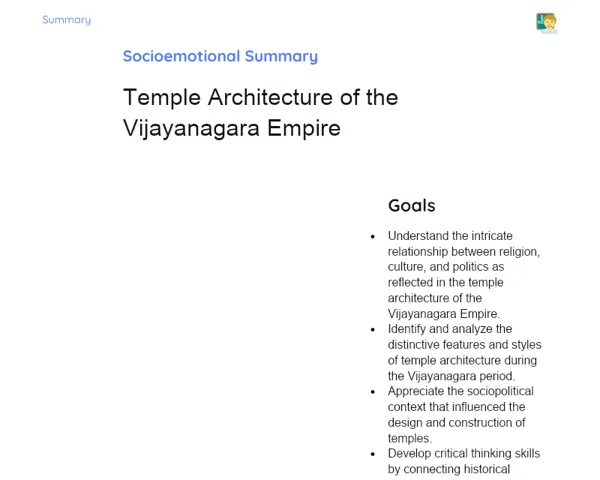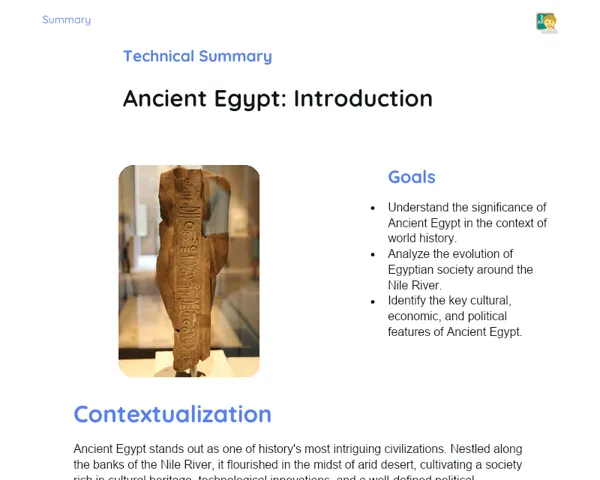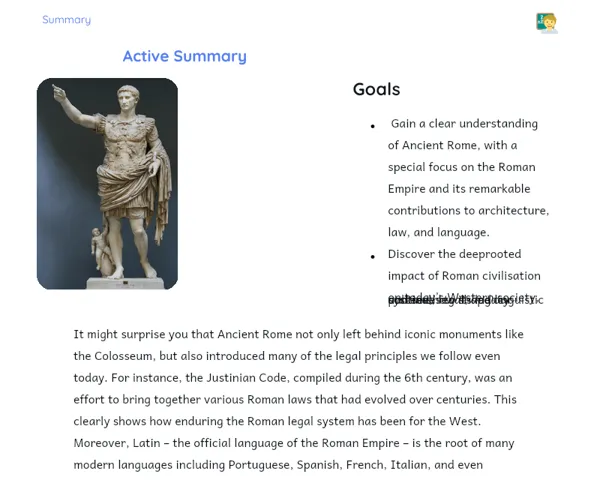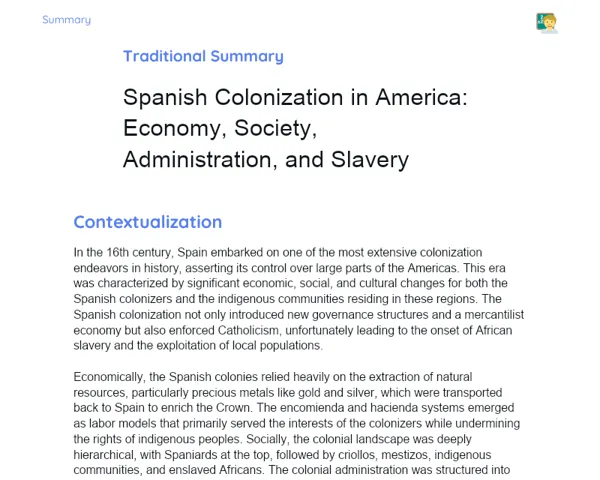Summary Tradisional | Ancient Rome, Monarchy and Republic: Review
Contextualization
To truly grasp how the Roman monarchy and subsequent republic came into being, it is important to place oneself within the historical backdrop of Ancient Rome. Founded in 753 B.C., Rome witnessed various forms of governance across the ages. The period of the Roman monarchy, which lasted until 509 B.C., saw the reign of seven kings, with Romulus as the pioneer and Tarquin the Proud as the last. The shift to a republic was not without its challenges – it was a time marked by intense social and political upheaval that led to the establishment of a government devoid of a king, where elected magistrates and the Senate held sway. This transformation laid down the foundations for Roman institutions that later went on to influence the mighty Roman Empire.
The early monarchy of Rome is fondly remembered for its pioneering contributions, such as the creation of initial laws and public institutions. However, the misuse of power, most notably by Tarquin the Proud, eventually sparked public dissent and led to the overthrow of the monarchy. The ensuing republic was characterized by a more sophisticated and inclusive setup in which power was distributed among various magistrates and the Senate, thereby representing the interests of both the elite patricians and the common plebeians. This period of transition and the ensuing reforms were crucial in paving the way for Rome's evolution into a major empire.
To Remember!
Foundation of Rome and the Roman Monarchy
The traditional date for the founding of Rome is 753 B.C., enveloped in many myths and legends. According to popular lore, the twin brothers Romulus and Remus, who were famously nourished by a she-wolf, founded the city. Romulus later emerged as the first king of Rome after an altercation with Remus. The monarchy, which continued until 509 B.C., saw the rule of seven kings – figures like Romulus, Numa Pompilius, and Tarquin the Proud, each contributing uniquely to the early development of Rome by establishing laws and public institutions.
This period was also significant for various reforms that laid the groundwork for the later republic and, ultimately, the empire. For instance, Numa Pompilius is credited with the introduction of many religious practices and the structuring of the Roman calendar. However, in its concluding years, the monarchy was tarnished by misrule; Tarquin the Proud’s autocratic style led to widespread discontent and eventually a revolt.
The move from monarchy to republic was spurred by widespread dissatisfaction with the kings, culminating in the expulsion of Tarquin the Proud in 509 B.C. This marked the beginning of a new chapter in Roman governance, one where elected magistrates and the Senate took charge, devoid of any kingly authority. Despite the end of the monarchy, its legacy can still be seen in the institutions and customs that continued to evolve in the republic and later in the empire.
-
Rome's founding in 753 B.C. by Romulus and Remus.
-
The reign of seven kings, including notable figures like Romulus and Tarquin the Proud.
-
Key contributions by these kings towards Rome's early structure and public institutions.
-
The revolt against Tarquin the Proud, leading to the birth of the republic.
Transition from Monarchy to Republic
The move from a monarchy to the Roman republic in 509 B.C. was a time of significant social and political conflict. The grievances against the autocratic rule of the last kings, with Tarquin the Proud at the forefront, ignited a public uprising. Figures like Lucius Junius Brutus played a pivotal role in this revolt, which eventually led to the overthrow of the king and the establishment of a new system of governance. In this new order, the power was shared between elected magistrates and the Senate, with no single individual holding absolute authority.
This republic was established with the aim of avoiding the concentration of power in one hand. The Senate, largely composed of the patrician class, assumed a crucial role in governance. Additionally, the creation of the consulship ensured that two magistrates were elected annually, providing a system of checks and balances in both executive and military matters. The formation of this republic also saw several reforms designed to ensure power was distributed fairly among different sections of society, such as the establishment of the Tribune of the Plebs and the codification of laws through the Law of the Twelve Tables.
-
The popular uprising against Tarquin the Proud in 509 B.C.
-
The inception of a government system without a king.
-
The development of the consulship and the strengthening of the Senate.
-
Reforms like the Tribune of the Plebs and the Law of the Twelve Tables to balance power between patricians and plebeians.
Political Structure of the Roman Republic
The Roman republic was known for its complex political framework that was designed to prevent any one person from amassing too much power. At the heart of this structure was the Senate, consisting mainly of the patrician elite, who exerted considerable influence over both political and military matters. The Senate was responsible for overseeing the actions of the magistrates and for giving consent to laws, though its authority was sometimes contested by the popular assemblies.
The chief magistrates, the consuls, were elected each year to handle both executive duties and military operations. The dual-consul system was specifically created to ensure that power did not concentrate in the hands of a single individual. Besides the consuls, other important officials, such as praetors who administered justice and censors who managed the census and public morality, played key roles in governance.
Moreover, several popular assemblies, such as the Centuriate Assembly and the Tribal Assembly, provided Roman citizens with a platform to vote on laws and elect magistrates, though typically the patricians held more sway. The introduction of the Tribune of the Plebs was a crucial step in giving plebeians a stronger voice in the political process.
-
The central role of the Senate in Rome's political structure.
-
Annual election of consuls to distribute executive and military responsibilities.
-
The presence of other magistrates, such as praetors and censors.
-
The involvement of popular assemblies and the significant role played by the Tribune of the Plebs.
Internal Struggles and Social Reforms
Internal turmoil was a recurring theme in the Roman republic, particularly the ongoing conflicts between the patrician aristocracy and the ordinary plebeians. While the patricians belonged to the traditional elite, the plebeians – comprising farmers, merchants, and artisans – formed the bulk of the population. These social tensions often led to reforms aimed at creating a fairer distribution of power.
One of the landmark reforms was the introduction of the Law of the Twelve Tables, which provided a codified set of laws ensuring the rights and responsibilities of both patricians and plebeians alike. Equally important was the establishment of the Tribune of the Plebs, an office created specifically to safeguard the interests of the common people against the predilections of the aristocracy.
The Gracchi brothers, Tiberius and Gaius, are particularly remembered for their ambitious attempts to introduce agrarian and social reforms, including the redistribution of public land among the poor and curbing the power of the elite. Despite facing harsh opposition and meeting tragic ends, their efforts ignited debates that eventually led to transformative political and social changes in Rome. These internal struggles and reforms were instrumental in laying the groundwork for the later transition from the republic to the empire.
-
Ongoing conflicts between the patrician elite and the common plebeians.
-
The Law of the Twelve Tables as a milestone in establishing legal fairness.
-
The creation and significance of the Tribune of the Plebs.
-
The reform efforts of the Gracchi brothers and their lasting impact.
Key Terms
-
Ancient Rome: Refers to the period starting from the founding of Rome in 753 B.C. up to the fall of the Western Roman Empire in 476 A.D.
-
Roman Monarchy: The governance system in Rome between 753 B.C. and 509 B.C., defined by the rule of kings.
-
Roman Republic: The era of Roman history between 509 B.C. and 27 B.C., noted for its system without kings and the sharing of power among multiple institutions.
-
Senate: A key political body mainly comprising the patrician class; it played a major part in political and military decisions.
-
Consuls: Elected magistrates who held the reins of executive and military powers on an annual basis during the Roman republic.
-
Patricians: The aristocratic class in Rome, traditionally holding the reins of power.
-
Plebeians: The common people of Rome, including farmers, traders, and artisans.
-
Tribune of the Plebs: An office established to ensure that plebeians had proper representation in governance.
-
Law of the Twelve Tables: A significant set of written laws that secured the rights and stipulated the duties of both patricians and plebeians.
-
Tarquin the Proud: The last king of Rome, whose overbearing rule sparked the move towards a republic.
-
Lucius Junius Brutus: A key figure in the revolt against Tarquin the Proud and one of the founders of the Roman republic.
-
Gracchi Brothers: Tiberius and Gaius Gracchus, remembered for their forward-thinking agrarian and social reforms.
Important Conclusions
In summary, the Roman monarchy, spanning from 753 B.C. to 509 B.C., was pivotal in framing the early structure of Rome, thanks to the contributions of its seven kings who laid the groundwork in law and public institutions. Yet, the misuse of power, particularly by Tarquin the Proud, provoked a public uprising that eventually paved the way for the republic—a governance system that did away with the concept of a singular king and shared authority between elected magistrates and the Senate.
The republic introduced a sophisticated political structure that prevented the undue concentration of power, with institutions like the Senate, annual consuls, and popular assemblies playing key roles in Rome’s administration. Persistent internal conflicts between the patrician elite and the plebeians led to significant social and political reforms, notably the Law of the Twelve Tables and the creation of the Tribune of the Plebs, which ensured a more balanced representation of all social classes.
Furthermore, Rome’s military campaigns and territorial expansion during the republic eventually contributed to its transformation into an empire. The administrative challenges accompanying these conquests weakened the republican framework and facilitated the rise of authoritarian rule under an emperor, leaving a lasting impact on Western political thought.
Study Tips
-
Revisit the major events and personalities discussed in class, including the seven kings of Rome, the revolt against Tarquin the Proud, and the reforms championed by the Gracchi brothers.
-
Make use of historical maps of Ancient Rome to better understand how territorial expansion influenced Rome’s political evolution.
-
Supplement your study with additional readings and primary historical documents covering the transition from monarchy to republic and the political structures of the Roman republic.



